“Let's go back to the mid-'80s where dance music began”: Your guide to creating a classic house track from scratch
Produce an authentic-sounding house track with a dose of acid in 10 easy steps
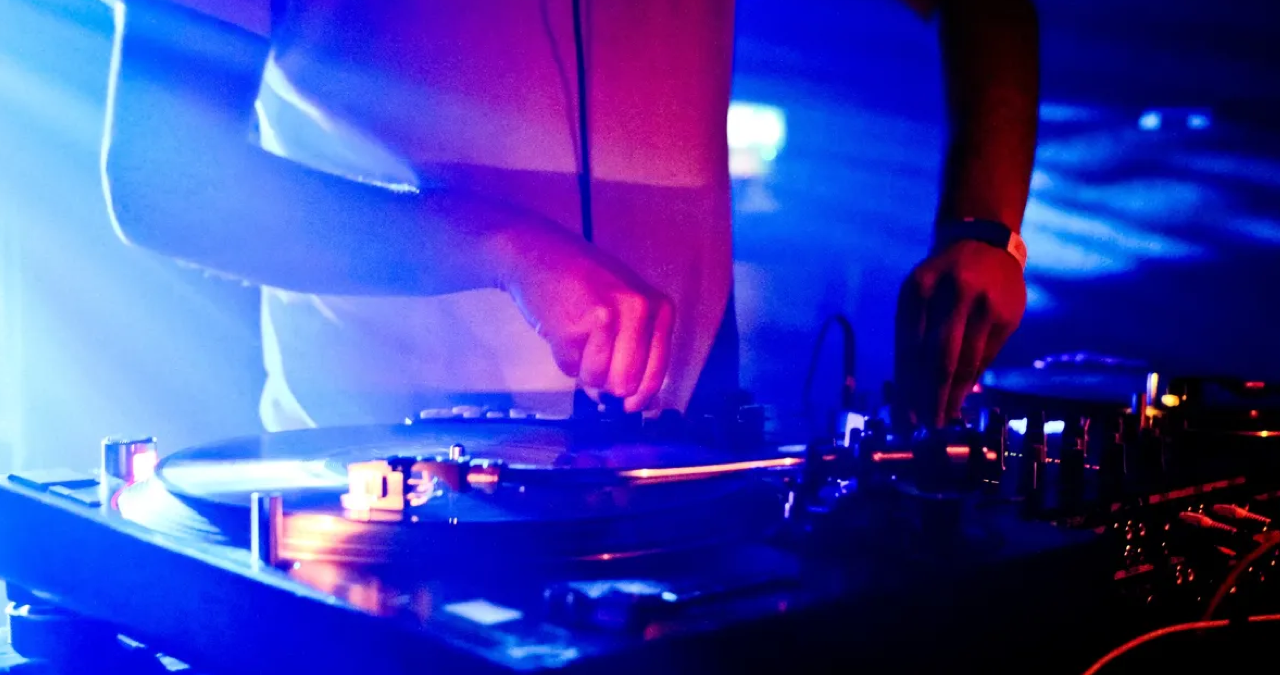
Recently, we detailed the amazing history of house and acid house music here, and it's quite a story. Just a few producers and DJs in Chicago started experimenting with old Roland gear back in the 1980s and gave birth to a scene that launched dance music as we know it today.
Frankie Knuckles spread the word at Chicago's Warehouse club - a venue which many say would give the genre its name - and DJs and producers including Ron Hardy, Jesse Saunders, Marshall Jefferson, Phuture, and more took the ethos, added a Roland TR-808 4/4 beat, piano stabs and TB-303 acid lines and developed it further.
The genre flourished, spawning its own sub genres. It moved beyond Chicago to the rest of the United States, and then took over the world. It's fair to say that without these Chicago pioneers, dance music would sound very different today.
In this tutorial we'll look in-depth at how to create a classic house track, and also how to give it an acid spin.
You won't need any extra tools to follow our tutorial as we'll show you how to sequence the beats using an 808 kit you'll likely have in your DAW, and if not we'll even supply the samples for you. So let's go back to the mid '80s where dance music began!
(To view bigger images, right click and select 'Open Image in New Tab)
Create a classic house track from scratch
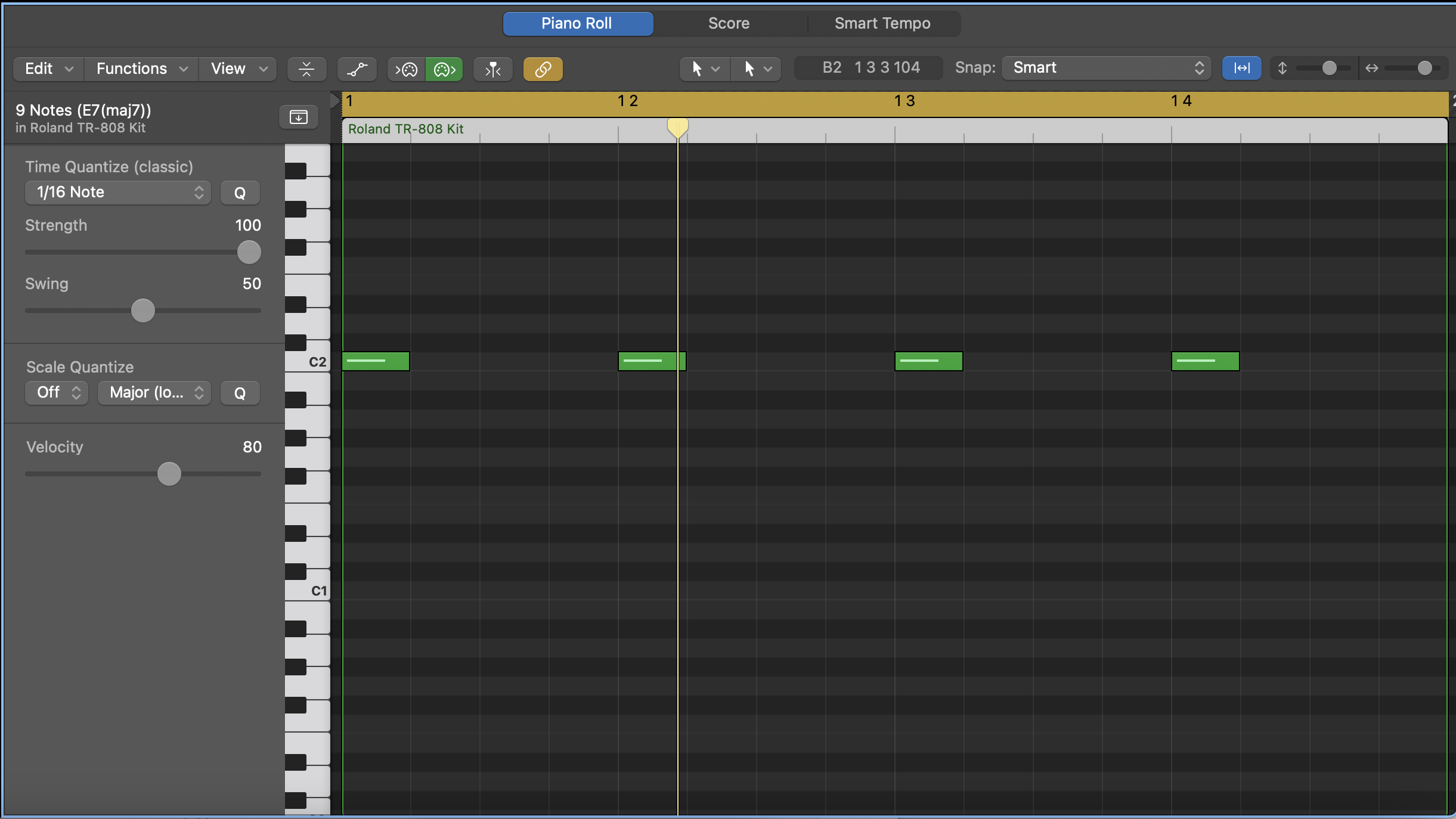
1. First set your tempo to 120bpm (most DAWs have this set as standard anyway). The first classic beat is the 4/4 kick utilising the bass drum of an 808 drum kit. Logic has its own 808 kit and here it is in the piano editor; most DAWs also ship with an 808 or similar. Our kick is placed on note C2 and we've simply drawn it in at the start of each beat in the bar for the classic house beat.
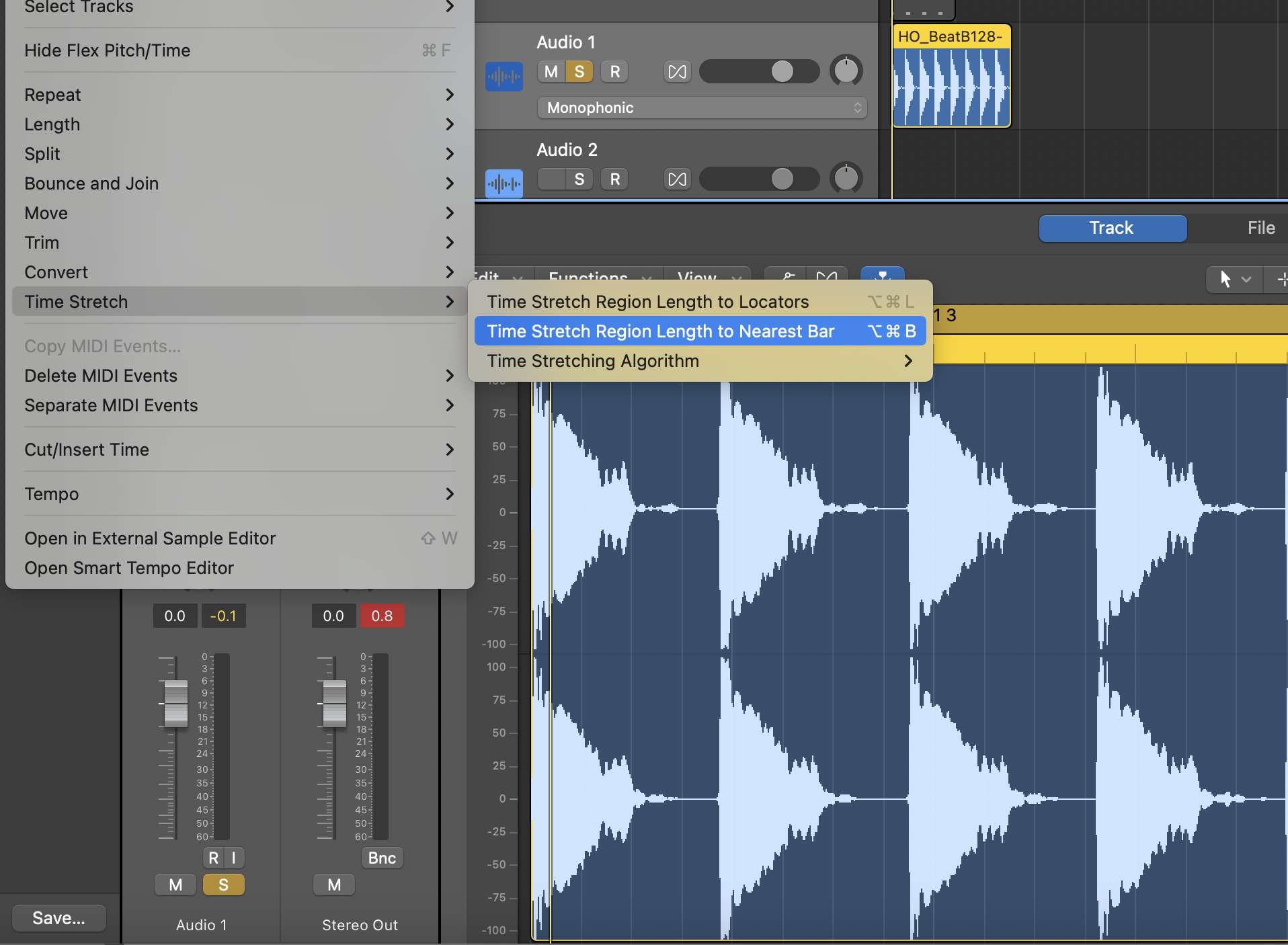
2. If you don't have an 808 kit in your DAW, don't worry. We have a set of house samples for you to download here.You can download the sample HO_Beats128-06 to give you that classic 4/4 beat. As it is at 128 beats-per-minute, you will have to time-stretch it down to 120bpm.
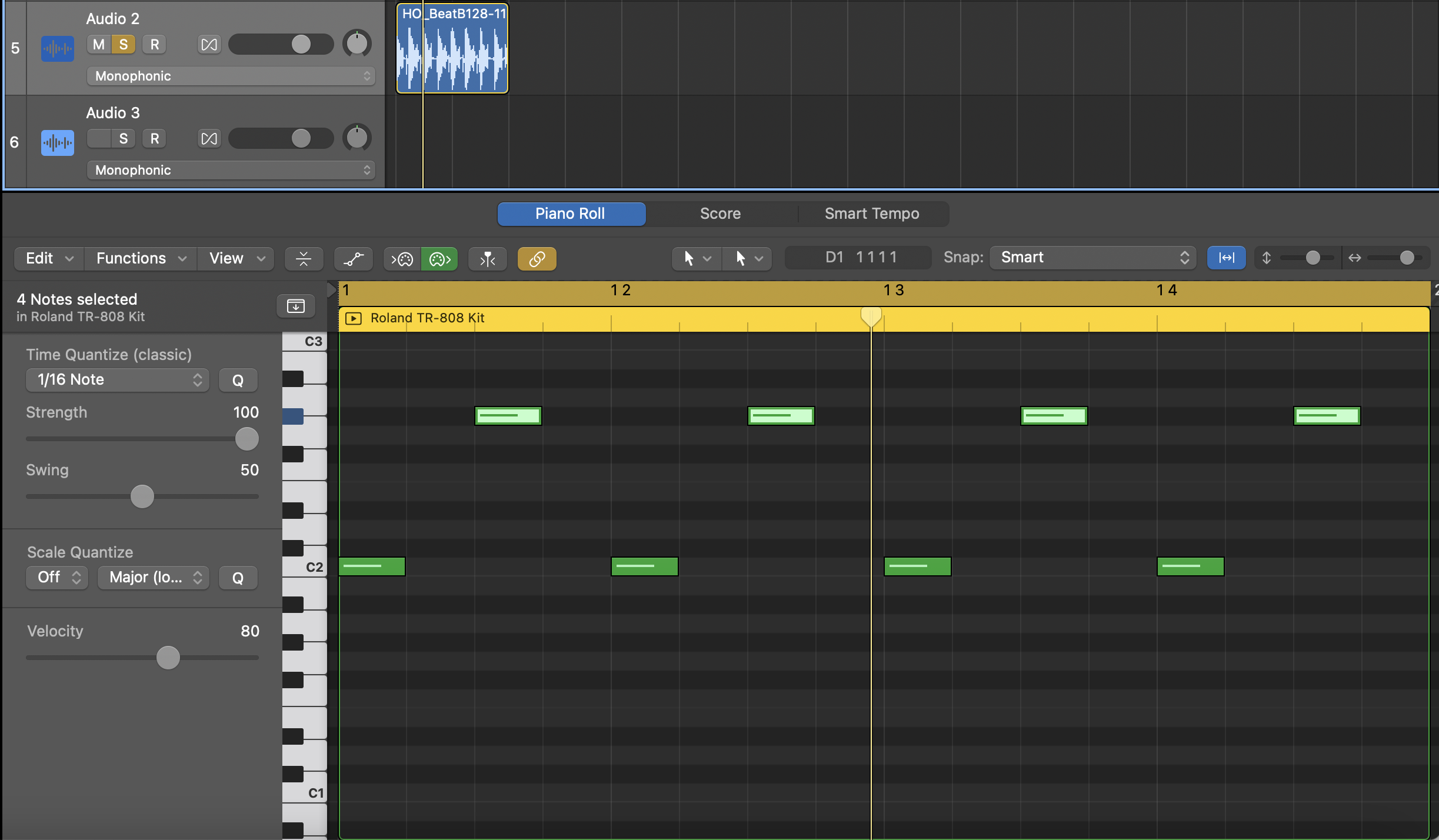
3. Now we'll add a hat on the off-beat after each kick; the Logic kit hat is on note G#2. You can add a flourish by placing two at the end of the bar should you wish or even earlier, but at this stage make sure you have four on the off beat for a rigid sound overall. Those without an 808 kit can load in sample HO_Beats128-11 for a rough approximation.
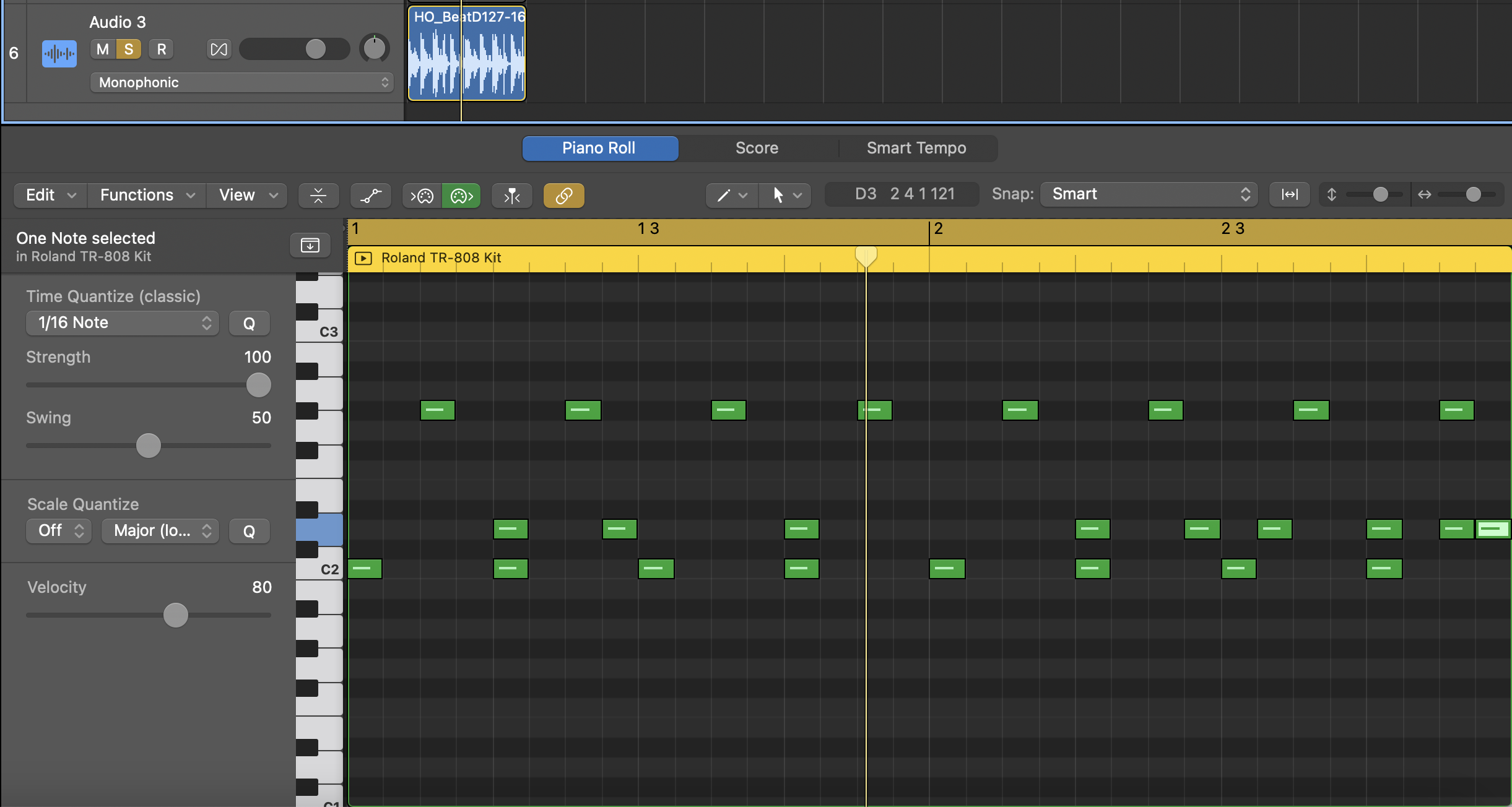
4. The snare (d2) was a very important factor in early house records. While you can put it on every other kick (as 'normal'), you can also play with it and use it to 'introduce' the kick as we have here. Really, you can go as mad as you like - imagine you are programming an original 808 using its step sequencer, so the snare can go anywhere for a more shuffling groove.
With that in mind, we've repeated our sequence so it now goes over a couple of bars with a different shuffling snare pattern on each. A close approximation to this is to download is HO_Beats127-16 - you'll need to time-stretch it again.
Want all the hottest music and gear news, reviews, deals, features and more, direct to your inbox? Sign up here.
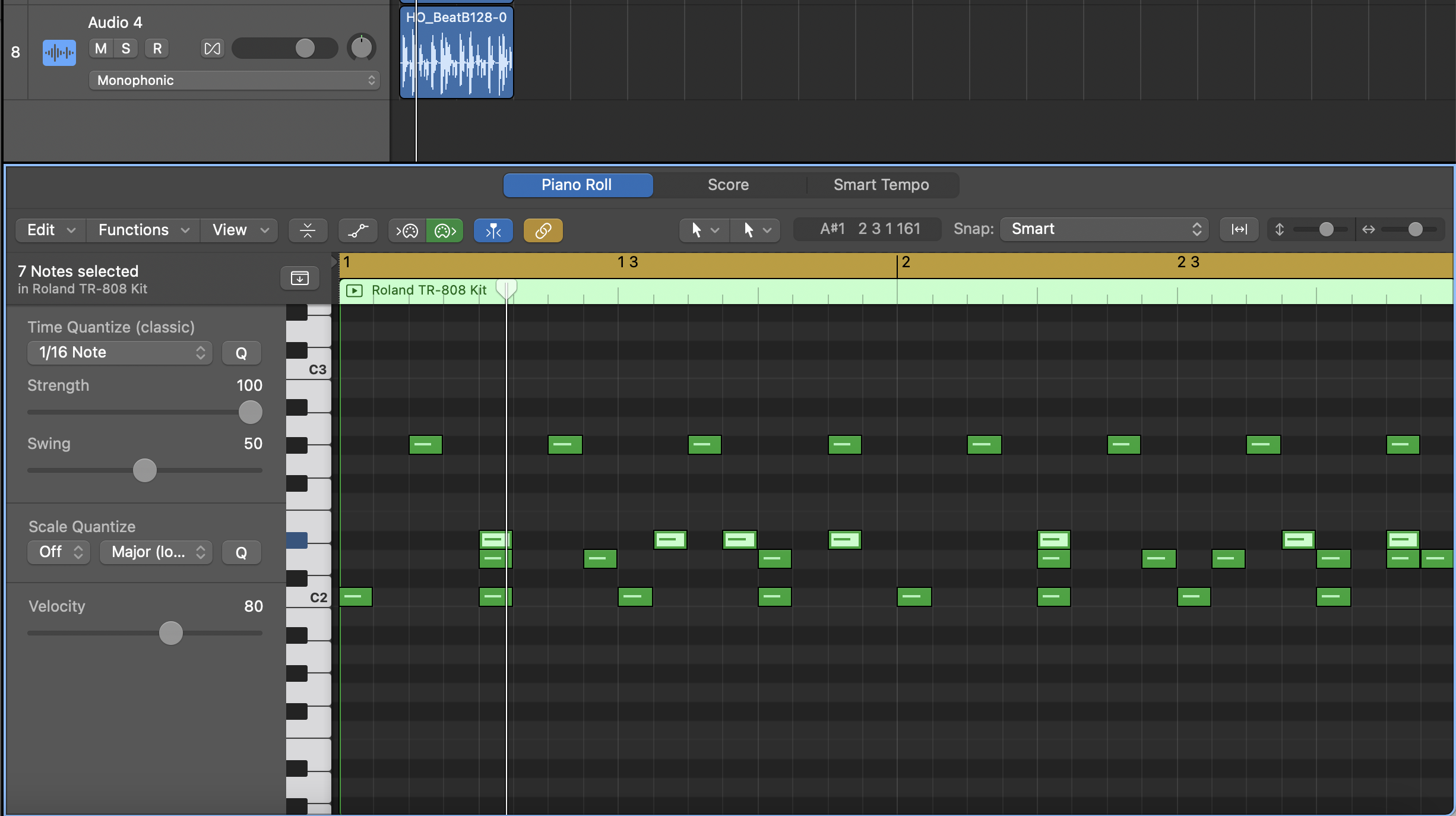
5. The clap is the same as the snare in many ways, although on some early house records it was simply used on every other beat. Again we've shown both with the clap (d#2) on the second kick of each bar to give it some rigidity and then spread some more before and after subsequent kicks to make the beat more free flowing. With your 4/4 beat as the backbone of the beat, you can play around with the 808 kit and its placement as much as you like. It's the sound of the kit that defined house. Sample HO_Beats128-09 gives a flavour of the clap and snare locations.
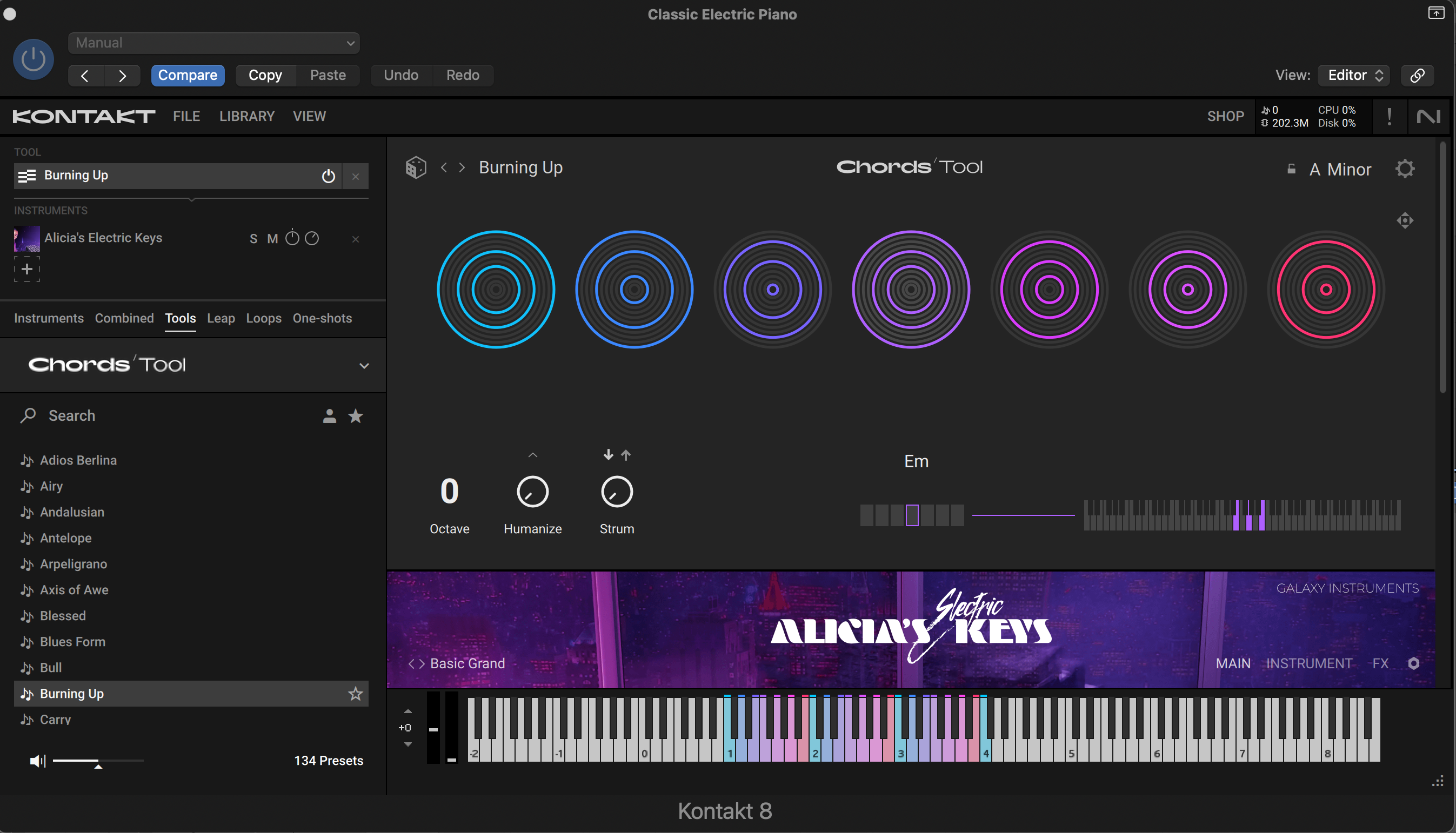
6. One of the enduring features of classic house, introduced by Marshall Jefferson on 1986's Move Your Body, is the piano chord progression. Now we're simply going to introduce that over our beats. If you have a chord progression generator like that in the latest version of Kontakt, then that's an easy way to get started. Either way, come up with something insistent and memorable and that classic house track will start to take shape.
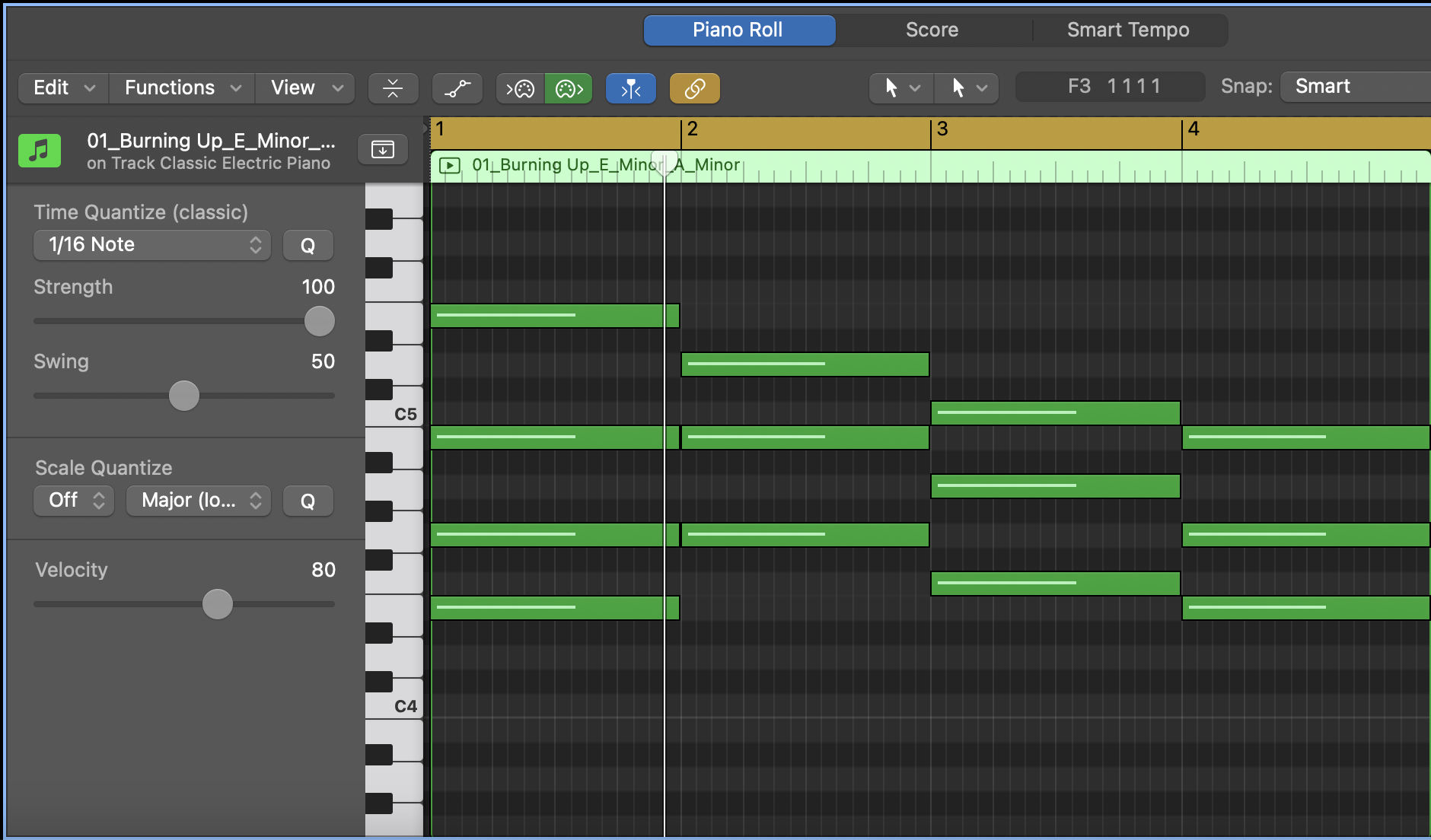
7. We've cheated and used a chord preset in Kontakt to give us quite a good house progression but you can benefit by copying us! The chords are E minor, G, F and back to E minor as shown. We're spreading our beats across a four-bar loop now just so you can see the chords.
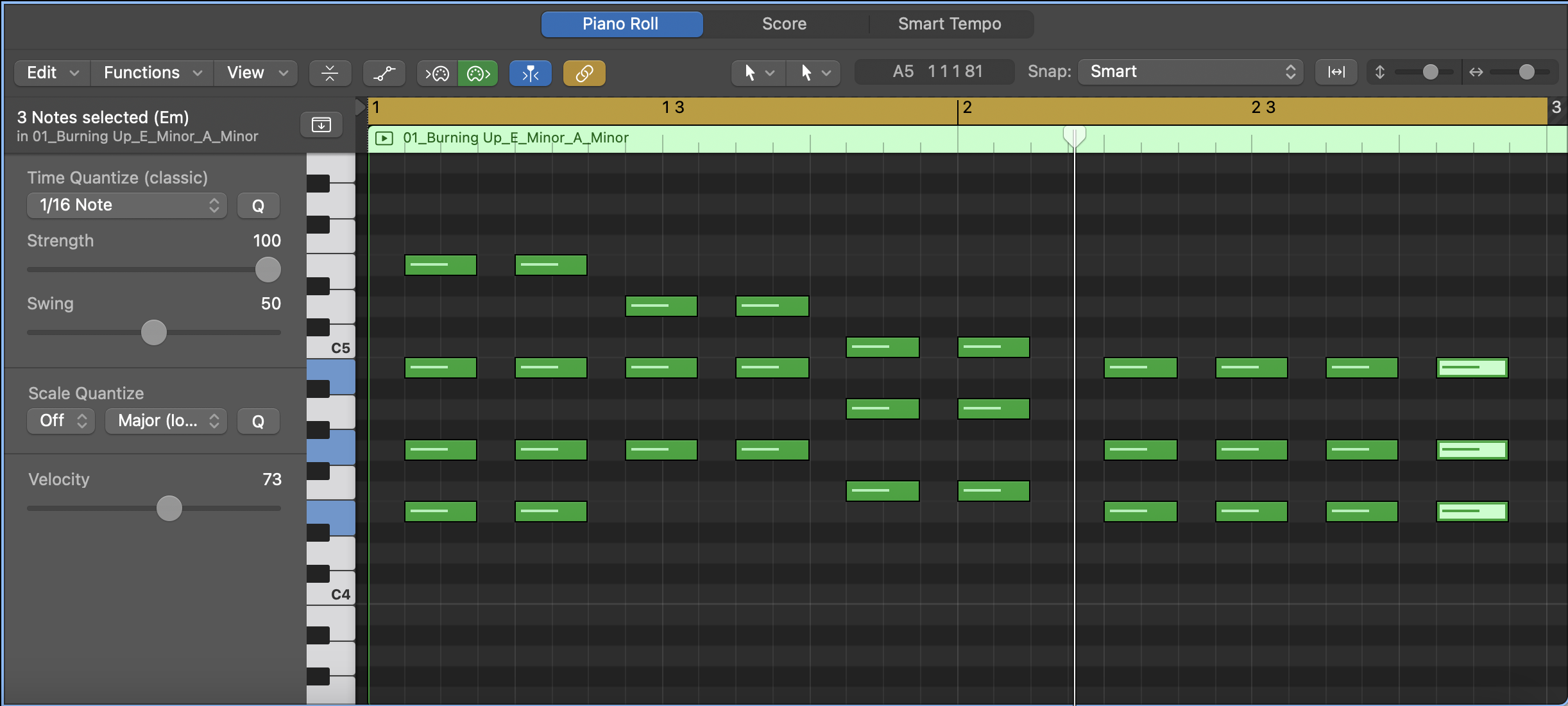
8. Now reduce the length of the notes to get more stab-style chords and place them as shown - we're now back to two bars cycling as well. The trick is to get some on the kick and some a division or so before or after to get that classic house swing. In terms of a sound, we've actually used a decent electric piano, but a bright pop piano sound would be better, or a classic Korg synth piano sound from the late '80s for authenticity.
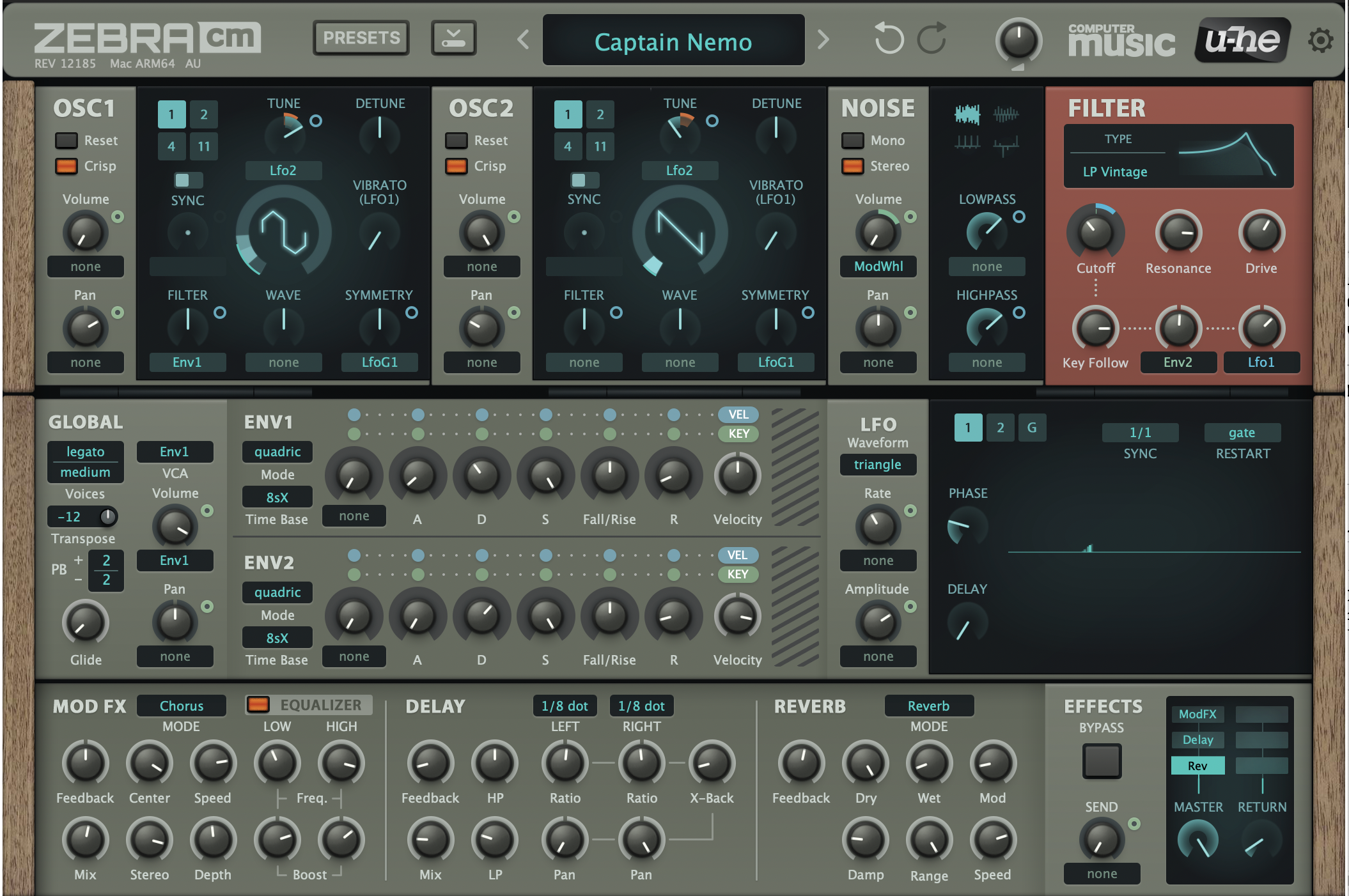
9. Acid house was a genre that started shortly after house and was just as important in the growth of dance music, especially in the UK.
You'll need a TB-303 squealing acid-style sound to create the proper bassline that backed those early acid house records, and Roland Cloud's software version is probably the most authentic, although there are many others from third-party companies. We're going to try and approximate the sound using Zebra CM, a free synth from the Computer Music plugin suite. We've selected the Captain Nemo preset but knocked out Osc 1 so we're left with a simple sawtooth sound (or simply select the Init preset).

10. Play in a 16th note pattern. You could place a note on every division, but we've introduced a more rhythmic pattern in ours to keep it interesting. We can approximate a 303 sound by automating the frequency and resonance as shown.
A real 303 relies on altering these and also does so with accents (velocity changes) and slides (legato) between notes, so you could also experiment with these for more authenticity, but to be honest, if you play with the filter on many bass sounds on a VA synth, you will get the feel of an acid squeal.
With these elements working together, you should have something close to the sound of classic 80s house brewing. A good starting point for further experimentation!
Andy has been writing about music production and technology for 30 years having started out on Music Technology magazine back in 1992. He has edited the magazines Future Music, Keyboard Review, MusicTech and Computer Music, which he helped launch back in 1998. He owns way too many synthesizers.
